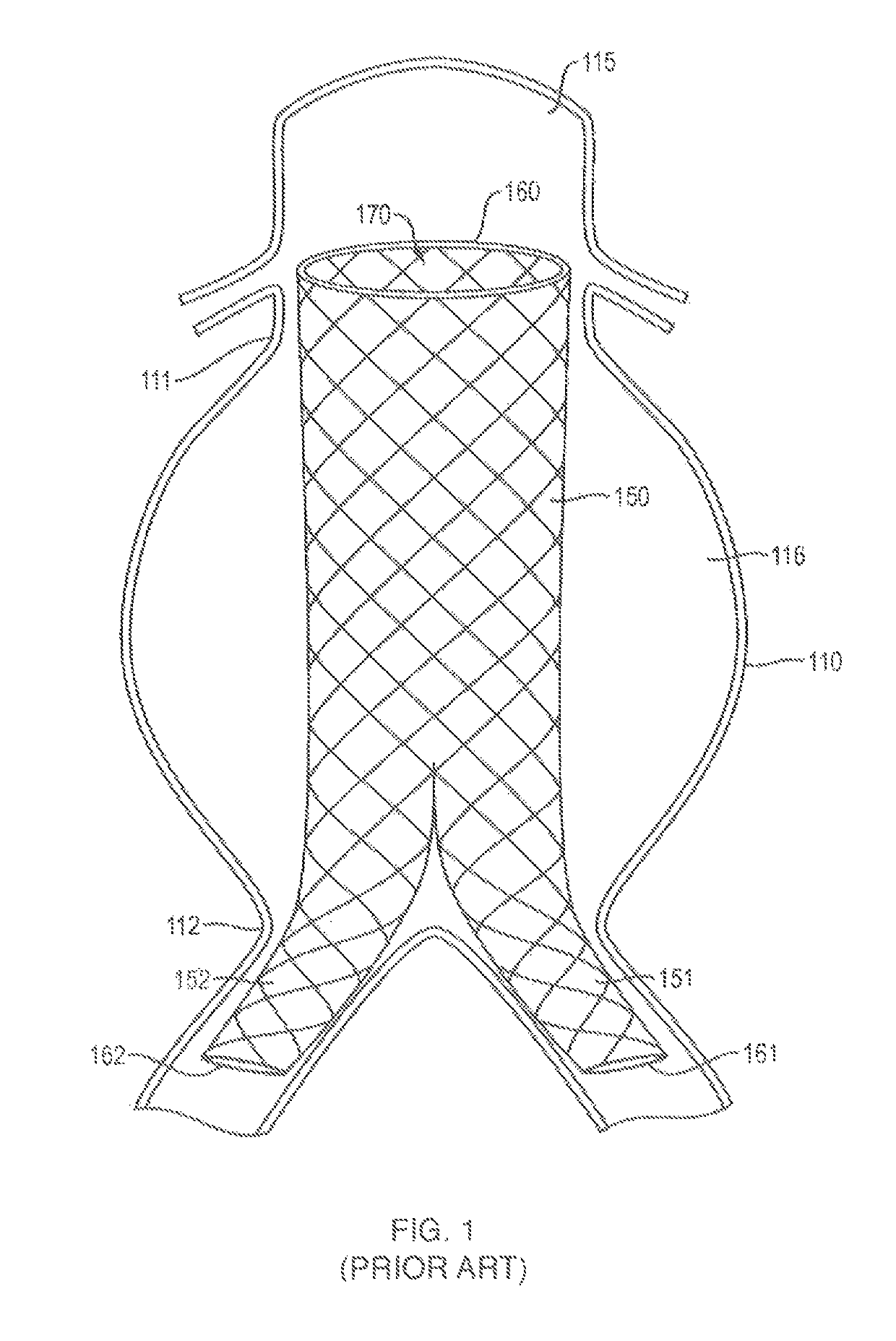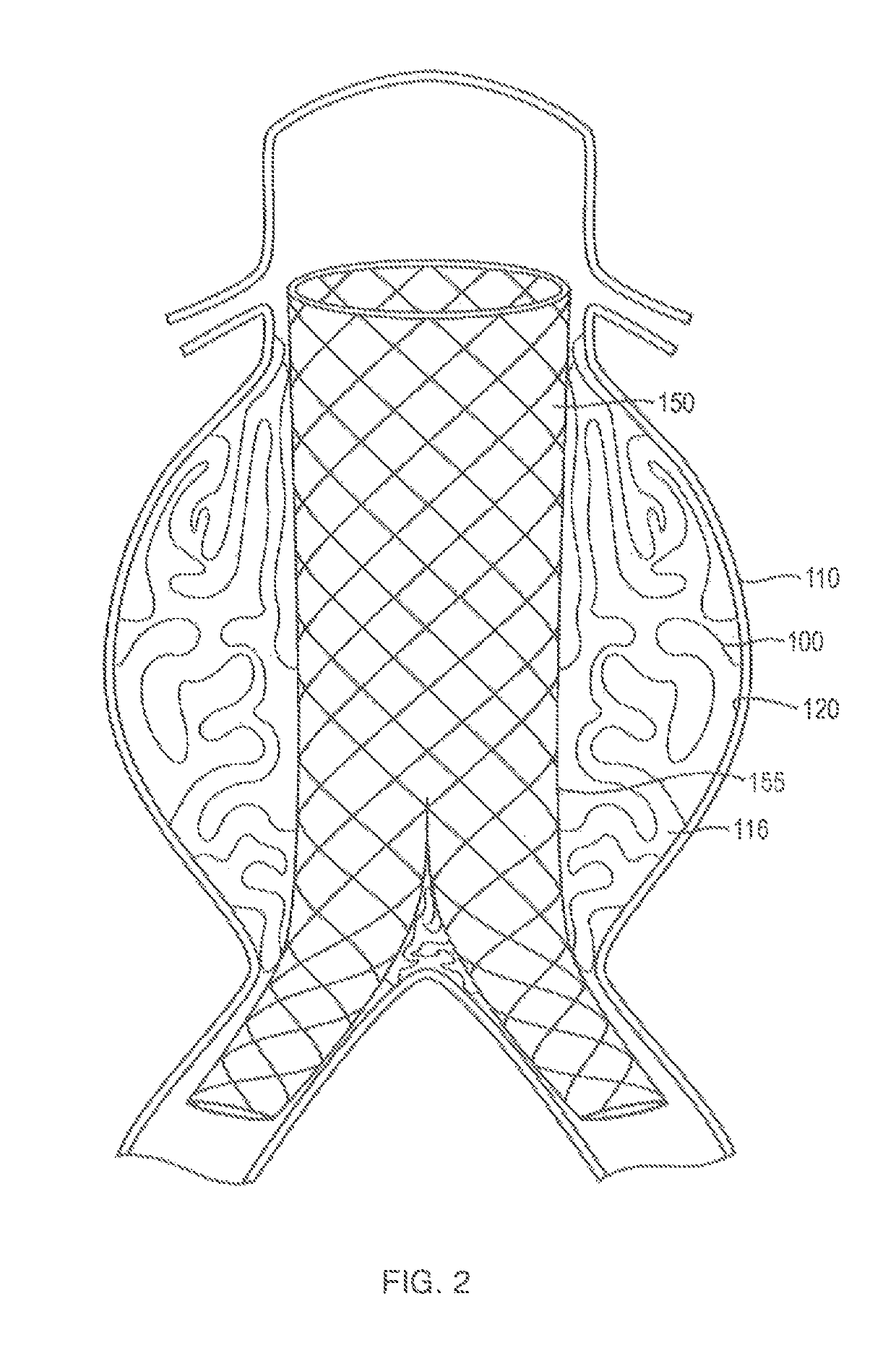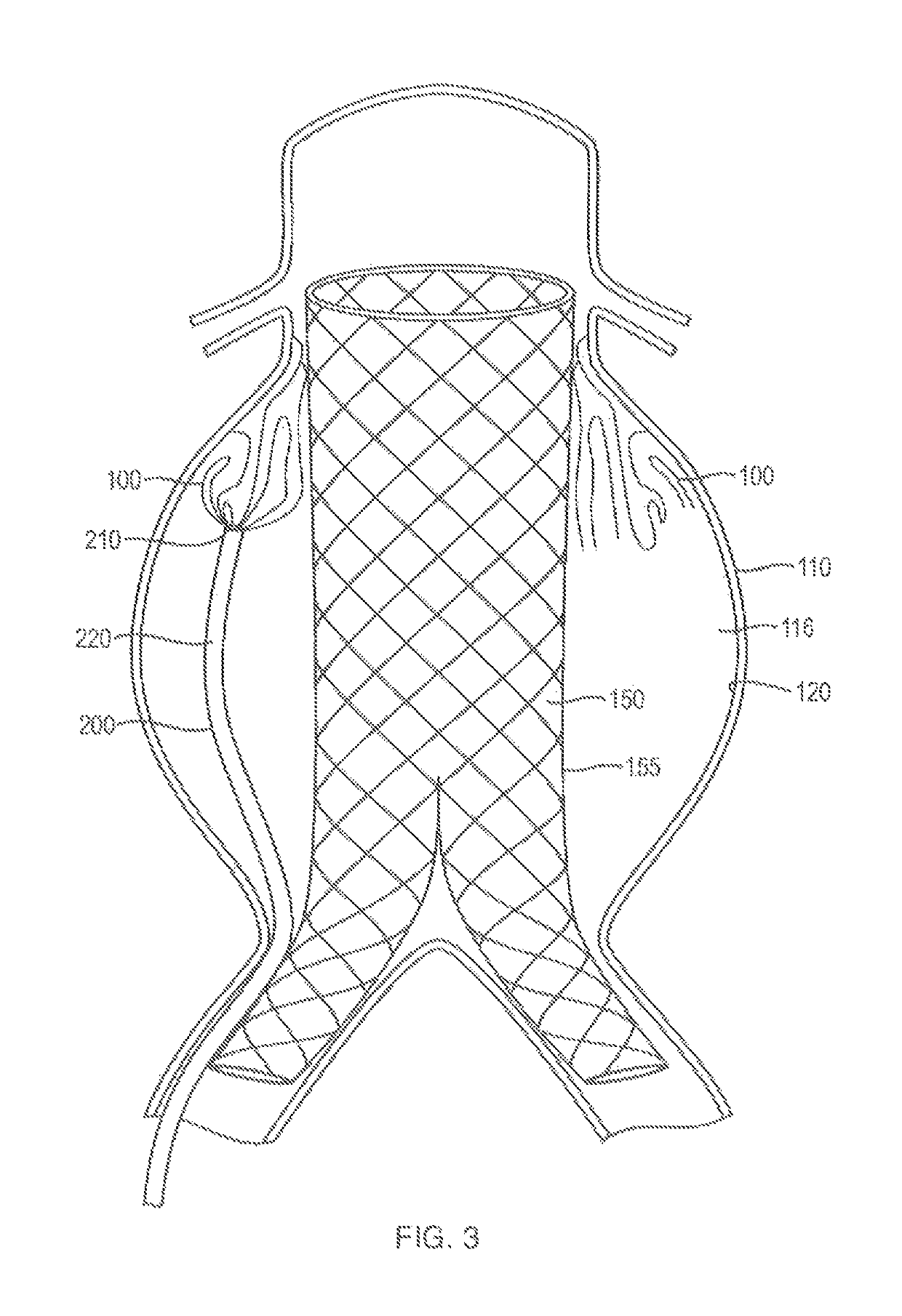In-situ forming foams for treatment of aneurysms
a technology of aneurysms and foams, applied in the field of in-situ forming foams for the treatment of aneurysms, can solve the problems of difficult implementation, difficult treatment of internal wounds and bleeding sites, and inability to immediately access surgical care, so as to prevent dislocation of foam and effectively wet tissues
- Summary
- Abstract
- Description
- Claims
- Application Information
AI Technical Summary
Benefits of technology
Problems solved by technology
Method used
Image
Examples
example 1
[0105]An elastic silicone tube was used to simulate an aneurysm with two feeding vessels. This tube was placed over and sealed onto a rigid acrylic tube used to represent a stent-graft. The volume of the space between these two tubes was approximately 6 mL and was filled with water. A one-part polymer formulation was injected via syringe into this space, where it reacted and expanded in-situ to form a foam. This demonstrates that the foam can expand as desired into an anatomy analogous to an EVAR grafted aneurysm.
[0106]In this example, the foam was made from a polymer consisting of an isocyanate and a polyol. The formulation consisted of a mixture of the polymer, a diluent, a catalyst and a surfactant. In total, 1.4 mL of this mixture was injected to fill the space.
example 2
[0107]In this example, a one-part polymer formula was delivered through a 90 cm, 5 Fr catheter into a silicone aneurysm model that was connected to a flow system. The aneurysm model was similar in size to a human abdominal aortic aneurysm and an endovascular stent-graft was placed across the aneurysmal segment (AneuRx®, Medtronic CardioVascular, Santa Rosa, Calif.). Within the aneurysmal segment, three silicone tubes were attached to mimic the inferior mesenteric artery and two lumbar arteries. These tubes were in fluid communication with the aneurysm. Static pressure heads were placed on all three tubes to simulate arterial pressure. The silicone aneurysm model was filled with water and connected to a flow loop comprised of silicone tubing and a peristaltic pump set to a flow rate of 1.6 L / min, similar to human cardiac output. The flow loop was placed in a water bath at 37 C, maintained by an immersion circulator. The total volume of the aneurysm was 145 mL and the volume of the an...
example 3
[0109]A polymer hydrophobic, MDI-based quasi polymer was deployed into two sheep models of abdominal aortic aneurysm and an in-situ forming foam injected via syringe to fill the excluded aneurysm space. The polymer was mixed with a diluent, a catalyst and a surfactant to optimize deliverability and reaction kinetics.
[0110]In the first model, an aneurysm was created in the sheep model using an anterior patch. In this model, a Dacron patch (HEMASHIELD®, Boston Scientific Corp., Natick, Mass.) was surgically inserted into the abdominal aorta. Doing so created a pocket of additional volume along the aorta. The sheep used was a 108 kg sheep with an abdominal aorta inner diameter of 9.2 mm. A 5 Fr catheter was advanced into the newly created aneurysm sac by angiography. To simulate a stent-graft excluding the aneurysm sac, a second 0.035″ guidewire was inserted into the aorta to guide an 8 cm×10 mm DORADO® (CR Bard, Inc., Murray Hill, N.J.) balloon across the opening of the aneurysm sac. ...
PUM
| Property | Measurement | Unit |
|---|---|---|
| viscosity | aaaaa | aaaaa |
| viscosity | aaaaa | aaaaa |
| densities | aaaaa | aaaaa |
Abstract
Description
Claims
Application Information
 Login to View More
Login to View More - R&D
- Intellectual Property
- Life Sciences
- Materials
- Tech Scout
- Unparalleled Data Quality
- Higher Quality Content
- 60% Fewer Hallucinations
Browse by: Latest US Patents, China's latest patents, Technical Efficacy Thesaurus, Application Domain, Technology Topic, Popular Technical Reports.
© 2025 PatSnap. All rights reserved.Legal|Privacy policy|Modern Slavery Act Transparency Statement|Sitemap|About US| Contact US: help@patsnap.com



